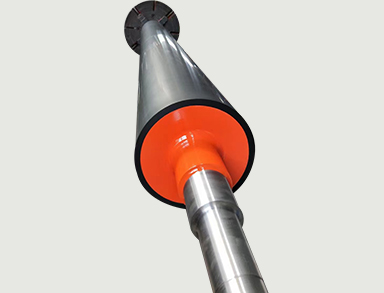The so-called rubber roller refers to a roller shaped product made of metal or other materials as the core and covered with rubber after vulcanization. According to their uses, they can be divided into paper making rubber rollers, printing and dyeing rubber rollers, printing rubber rollers, hulling rubber rollers, metallurgical rubber rollers, and oil printing rubber rollers, etc; According to surface morphology, it can be divided into flat rollers and patterned rubber rollers;
According to materials, it can be further divided into butyl rubber rollers, nitrile rubber rollers, polyurethane rubber rollers, and silicone rubber rollers. It generally consists of an outer layer of adhesive, a hard adhesive layer, a metal core, a roller neck, and a vent hole. Its processing includes processes such as roller core sandblasting, bonding treatment, adhesive molding, wrapping, wire winding, vulcanization of vulcanization tanks, and surface processing. Rubber rollers are mainly used in papermaking, printing and dyeing, printing, grain processing, metallurgy, plastic processing, and other fields. The newly cast rubber rollers should not be put into use immediately. Due to the unstable internal structure of the newly cast rubber roller, if immediately put into use, it is easy to reduce its service life. Therefore, the newly released rubber roller should be left for a period of time to maintain a relatively stable state after being in contact with the external environment temperature and humidity. This can increase the toughness of the colloid and improve its durability. The glue roller to be used should be cleaned thoroughly, then wrapped with plastic film and placed on the glue roller frame. It is not allowed to stack a few randomly or lean against the wall to avoid unnecessary loss of the glue. During the transportation process of sending waste rubber rollers for processing and casting, it is important to avoid littering, placing, or heavy pressure, and to ensure that the roller core is not skewed or bent to ensure its norma




 Service
Service